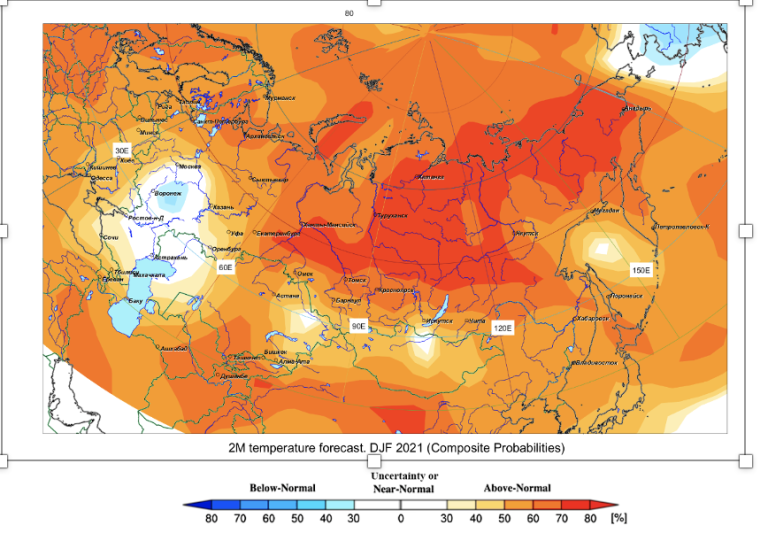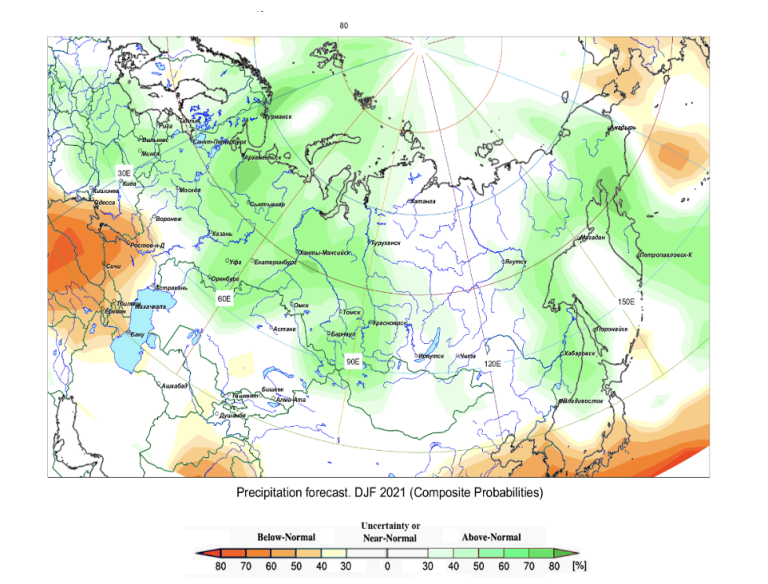North Eurasian Climate Outlook Forum (NEACOF-21), Moscow
The North Eurаsian Climate Center (NEACC) held the 21th session of the North Eurasian Climate Outlook Forum (NEACOF-21) in Moscow from 22 to 26 November 2021 as a part of the International Young Scientists School and the Сonference on Computational Information Technologies for Environmental Sciences in commemoration of RAS (Russian Academy of Sciences) Corresponding Member Vasily Lykosov. Participation in the event also was available via Internet resources.
The North Eurаsian Climate Center (NEACC) held the 21th session of the North Eurasian Climate Outlook Forum (NEACOF-21) in Moscow from 22 to 26 November 2021 as a part of the International Young Scientists School and the Сonference on Computational Information Technologies for Environmental Sciences in commemoration of RAS (Russian Academy of Sciences) Corresponding Member Vasily Lykosov. Participation in the event also was available via Internet resources.
The NEACOF-21 was attended by experts of NHMSs of CIS (Commonwealth of Independent countries) and other countries, scientists of research institutes, as well as teachers, graduate students and students of higher educational institutions with a specialization in meteorology and climatology. In total, about 70 participants were registered.
During NEACOF-21 an overview on the scientific and operational activities of NEACC in 2021 and the assessment of the consensus forecast for summer-2021 were presented. Results of monitoring of stratospheric and tropospheric circulation during the summer-2021 season were discussed; climate monitoring and seasonal forecasts from lead forecast centers were presented. After comprehensive discussions among experts a consensus forecast in probabilistic form for surface air temperature and precipitation for the upcoming winter of 2021/2022 was issued.
Consensus outlook of anomalies of surface air temperature and precipitation for the winter period (DJF) 2020/2021
According to the NEACOF-21, the winter season 2021/22 is expected to be warmer than normal in the most of Northern Eurasia (fig.1). In the northern part of European Russian, positive temperature anomalies are expected with a probability of 45-75%. In the west of European Russian, in the east of Belarus and the north of Moldova the probability is 35-45%, in the southern half of European Russian and in the border area with Ukraine there is uncertainty. In the south-eastern part of the centre of European Russian the temperature below normal is possible with 40% chance. Warmer than usually with a probability of 45-60% may be in western half of Belarus, western Ukraine and southern Moldova. Throughout the Siberia, the Urals and the Russian Far East, temperatures above normal are predicted with a probability of 60-70%. Warmer than usual winter season is likely to be in regions situated to the south of Baikal. In the far east of Chukotka, there is uncertainty in the forecast.
In Central Asia, there is uncertainty in the north-west of Kazakhstan and the low positive signal in north-east of Kazakhstan. In the rest of Central Asia the temperature above normal is expected with a 45-60% probability.

Figure 1. DJF 2021/22 consistency map of air temperature anomaly forecast based on 6 weighted models (INM, SL-AV, MGO, TCC, CanSIP, CFS2). Positive (negative) values (in %) mean the number of models with weights that predict positive (negative) anomalies of surface air temperature.
Above normal precipitation is expected in Belarus, western Ukraine, Moldova, the northern half of the European Russia, the Urals, western Siberia and northern Kazakhstan with probability of 50-60% (fig.2). A deficit of precipitation with a probability of 45-55 % is possible in eastern Ukraine, Crimea, Krasnodar Krai, and in Transcaucasia. An excessive precipitation is predicted (with probability up to 50 %) in the central and eastern regions of Yakutia and in the Far East region. Dry winter conditions are expected in eastern Chukotka (45-60%). In Central Asia, except northern districts of Kazakhstan, forecast has an uncertainty. In some parts of southern Central Asia below normal precipitation has a non-significant probability.

Figure 2. DJF2021/22 consistency map of precipitation anomaly forecast based on 6 weighted models (INM, SL-AV, MGO, TCC, CanSIP, CFS2). Positive (negative) values (in %) mean the number of models with weights that predict positive (negative) precipitatio
- WMO Member:
- Russian Federation










